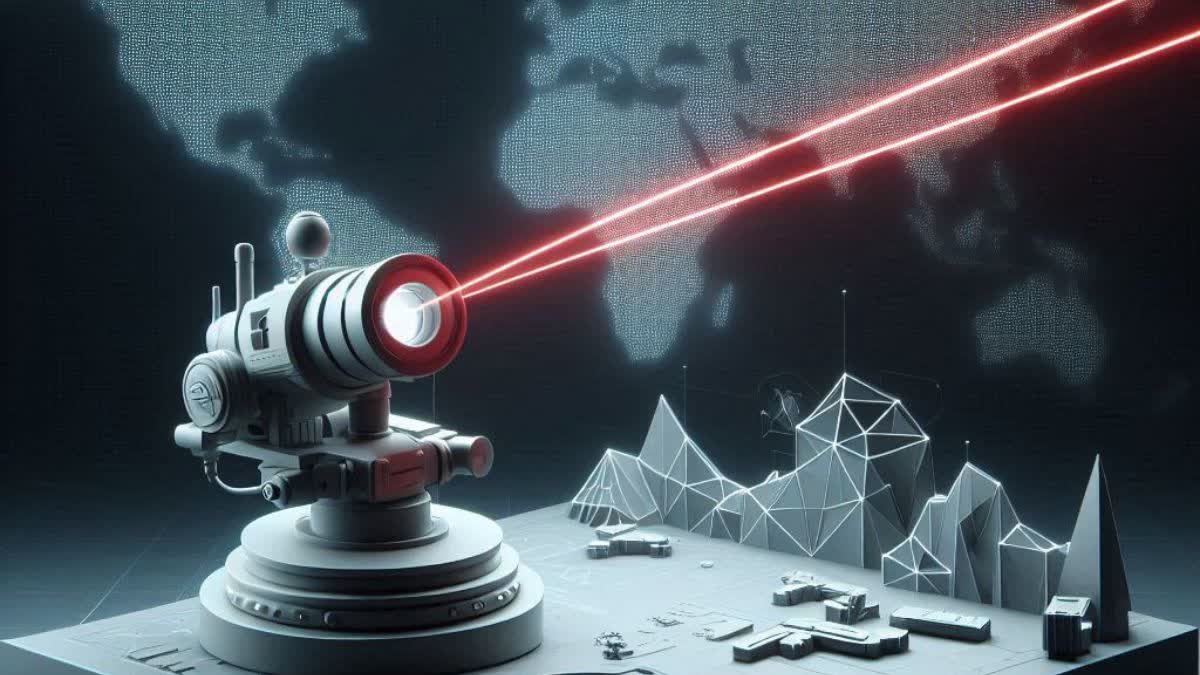Hyderabad: The US Navy reportedly tested its laser weapon "Helios" from the USS Preble against a drone. The undated picture of the test was revealed in the US Centre for Countermeasures’ annual report. While it does not provide details about the location or date of the test, it mentions that the objective of the test was to "verify and validate the functionality, performance, and capability of the High Energy Laser with Integrated Optical Dazzler and Surveillance (HELIOS) system" against an unmanned aerial vehicle.
This test follows the UK's successful trial of its own laser weapon, DragonFire, which targeted aerial objects last year. Notably, India also has ambitious plans for its own laser weapons, with two DRDO labs working on developing the technology.
Since its invention in 1960 by Theodore Maiman at Hughes Research Laboratory in California, LASER, or light amplification by stimulated emission of radiation, has had high global appeal as a weapon. While several countries already have laser defence systems, others have been investing efforts and money to utilise the technology as a weapon.
Countries and their Quest for Laser Weapon Systems
CHINA: Back in 2006, there were claims that China used lasers to blind a US satellite, suggesting they have some pretty powerful laser weapons. Even though they've reportedly deployed lower-energy laser systems that target slower and smaller objects, China is said to have some serious laser firepower with their Silent Hunter weapons. Fast forward to August 2024, and news reports stated that China had armed one of its Type 071 amphibious assault ships with a laser-directed energy weapon.
GERMANY:In September 2023, the German Navy tested their laser weapon demonstrator (LWD) on the Sachsen F-124 air-defence frigate. They conducted over 100 test firings, proving its functionality under realistic conditions with various targets. Fast forward a year to September 2024, and Germany's Rheinmetall and MBDA announced they were teaming up to develop a maritime-based laser weapon system, aiming to have it ready in the next five to six years.
ISRAEL:In November 2024, Israel's Ministry of Defence inked a $500 million deal to ramp up production of the high-power laser system, Iron Beam. Created by Rafael Advanced Defense Systems and Elbit Systems, Iron Beam is built to tackle aerial threats like rockets, mortar bombs, drones, and cruise missiles. The Israel Defense Forces will be the first military to deploy this high-energy laser weapon on a large scale with the Iron Beam Air Defence System.
JAPAN:In November 2024, Japan's Ground Self-Defense Force (JGSDF) rolled out a 10kW-class high-power laser electronic warfare (EW) combat truck, developed by the country's Defense Acquisition Agency. This cutting-edge laser system represented a big leap forward in Japan’s directed-energy weapon (DEW) capabilities.
RUSSIA:Russia has experimented with the Peresvet laser weapon system, which began equipping the Russian Armed Forces in 2017 and was deployed for experimental combat duty in December 2018. President Putin announced its service entry in December 2019, and Defense Minister Sergei Shoigu confirmed its deployment with five Strategic Missile Forces divisions. Peresvet autonomously neutralises enemy reconnaissance satellites with powerful laser beams and can affect satellites at altitudes of 200 to 1,100 kilometres with a coverage diameter of 130 to 180 kilometres. Russia also has another laser weapon system called Zadira, which, according to Deputy Prime Minister Yury Borisov in May 2022, is being used to shoot down Ukrainian drones.
SOUTH KOREA:In December 2024, the South Korean Army introduced the Block-I Laser-Based Anti-Aircraft Weapon, designed to take down aerial threats for just $1.50 per shot. The Defense Acquisition Program Administration (DAPA) announced a 100 billion won contract to develop this effective and budget-friendly drone-killer. This laser system is praised for being quiet, invisible, and with each shot costing only 2,000 won.
